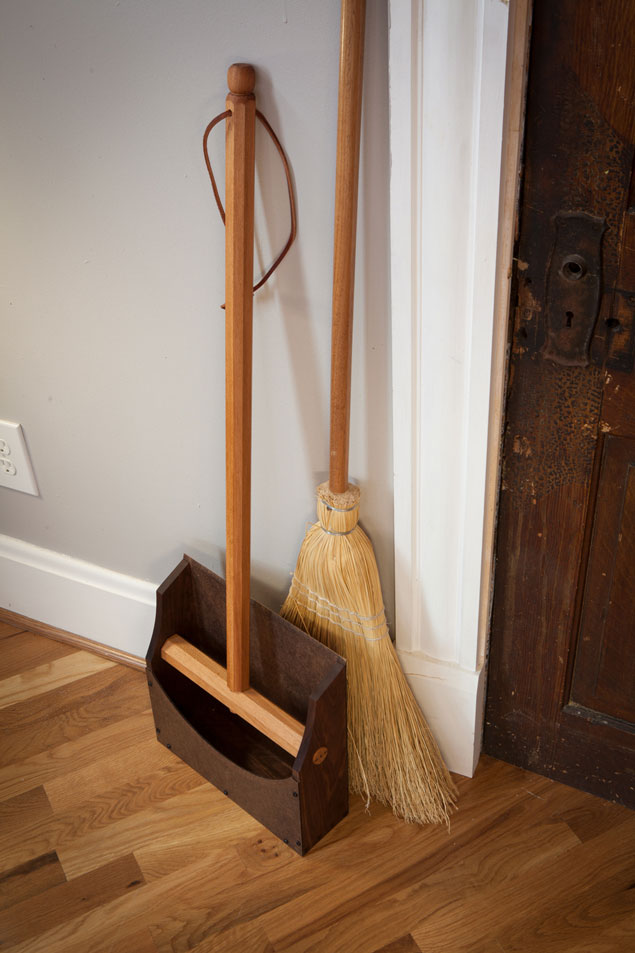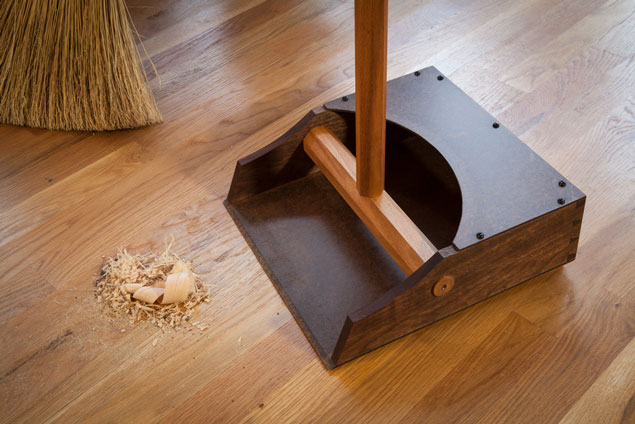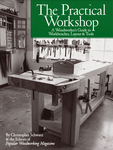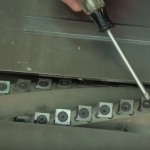We may receive a commission when you use our affiliate links. However, this does not impact our recommendations.
Almost every plastic or aluminum dustpan I’ve used has been disappointing. The aluminum ones bend too easily and make it impossible to capture fine dust. And plastic ones are just that: plasticy.
So like any half-decent woodworker, I set out this fall to build my own. Shopmade dustpans were once a common sight, so it’s not like my idea is original. But finding plans for a rotating dustpan with a tall handle (so you don’t have to stoop) are rare.
So I spent a month investigating patents of dustpans. I looked for the common ways they were built, their proportions and their mechanisms. Among the patent papers, I found a lot of interesting designs that were entirely too complex. But they pointed me in the right direction on deciding how the pan should tilt.
Then I studied existing dustpans, mostly plastic ones, to determine what I didn’t like about the way they worked.
After boiling all that down, I made a prototype from scraps and screws. The research paid off – the dustpan was surprisingly nice. It will stand on its own easily. It pivots readily when you lift it. And the front edge is always firmly against the floor thanks to a half-dowel on the bottom of the pan.
Then I built a nice one from walnut – dovetailed at the corners – that is cladded with hardboard. When oiled up, the hardboard and walnut work quite well together. The handle and the “axle” – which is what the pan rotates on – are scraps of sycamore.
The article on the dustpan will be in an upcoming issue of Popular Woodworking Magazine. And the above experience has caused me to look around at some of my other plastic devices in my shop – especially my water bucket – with a jaundice eye.
— Christopher Schwarz
Here are some supplies and tools we find essential in our everyday work around the shop. We may receive a commission from sales referred by our links; however, we have carefully selected these products for their usefulness and quality.












Your comment about “especially my water bucket” has prompted a suggestion; Asian style wooden water buckets. I have a pair of supposedly antique Japanese water buckets that a friend of mine gave me when he moved away. Some where along the way in his travels and moves he lost the shoulder yoke. They are about 14 inches square at the top, 11 inches at the bottom, and are 12 and 14 inches tall. The panel sides are about 1/2 inch thick and the corners are dovetailed with wood pegs. The smaller is better made; the larger is fairly rough. The flat bottoms look to be nailed on, as is the wooden hoop bail. The side and bottom wood is likely a softwood, and they show considerable wear. They might hold water again after the are soaked and allowed to swell. I use them to hold kindling for the fireplace.
I have photos for you, but don’t know how or where to send them. I’ll try over at Lost Art Press.
Hi Chris – Why did you go with the hardboard for the front panel (and also the back? can’t tell from the pictures). Was it for reasons of cost, or wanting a thinner material, or some other reason? Thanks
Dang, talk about mind meld. Just this past week I was dreaming about making my own dust pan. I’m glad you did the month of research to create the design and now all I have to do is follow the instructions. Excited. Only appropriate to have a handmade dustpan with my new handmade broom.
For a non-plastic bucket to merit sitting beside this fine hand-crafted dustpan, I’d suggest a coopered bucket made of beech. You could commission a blacksmith to forge you some hand-crafted hoops and a handle.
I like it. I hope the article comes out soon, I already have orders for 3…4 if I actually get to keep one for myself.
Superb! Need one of those.
When you write that article, please include a picture that shows what’s left on the floor after sweeping up the dust. I’ve found only one dustpan in the past 50 years that didn’t leave a “shadow of dust” that takes many repeats to pick up.
Hi Chris, love your dustpan, me too searching for something of so functional.
If you put a magnet in center of the base and a corresponding spacer at bottom of the handle you can put in the middle of shop without needs of wall for support… and also you can find some lost screw.
A slightly off-topic comment. As long as you are exercising your design genes, I was thinking, what would a Schwarz-designed workbench look like? I know you are enamored with the old (very, very old) designs, BUT, if you took your existing knowledge (pros and cons of various designs) and a spanking new clean piece of paper what would the Schwarz-bench look like?